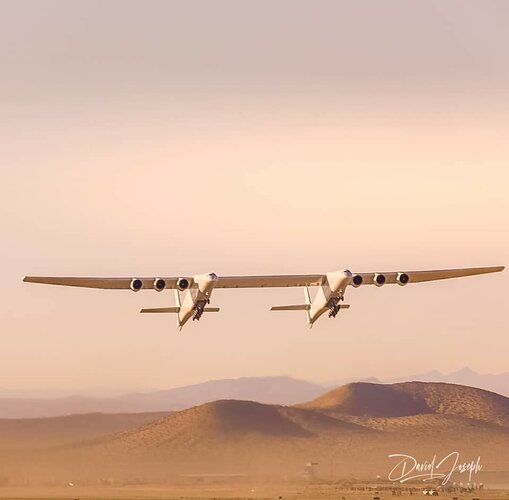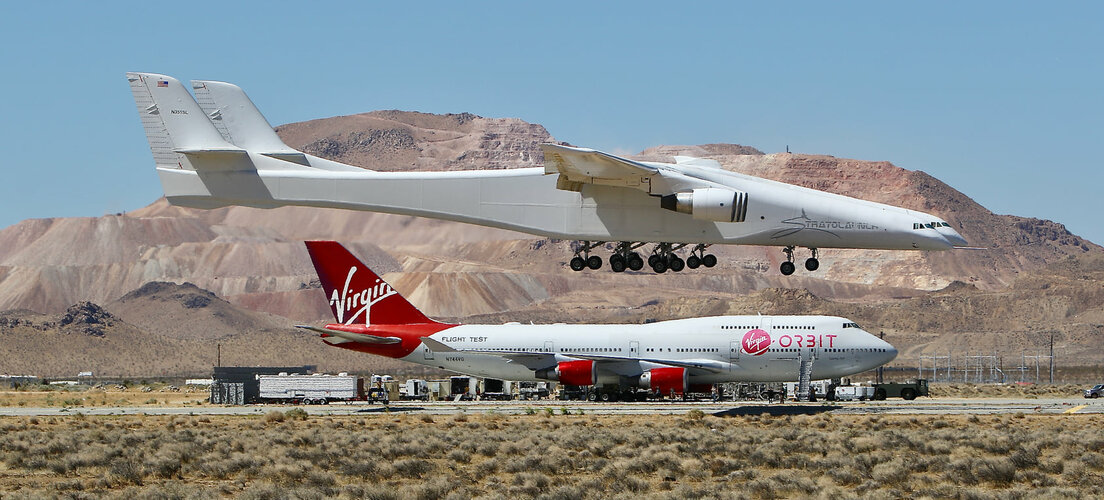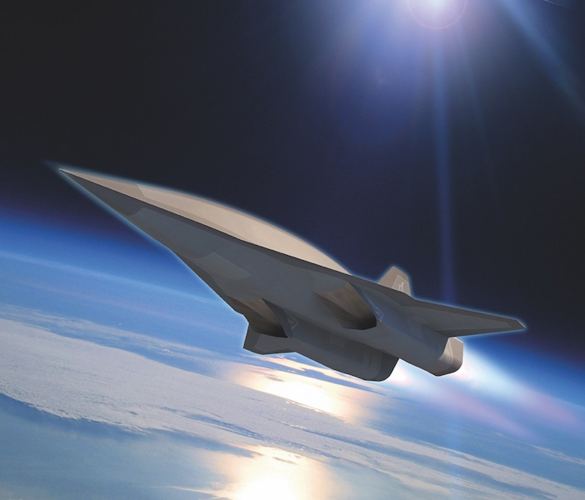Stratolaunch? Guys, you opened a whole new world for me. I never heard about this company, and as I see, it's quite successful.
No it isn't. Billionaire Paul Allen created the company to launch spacecraft. It was very much an ego-driven project (I think it should have been called "Egolauncher").
(See something I wrote about this back in December 2012:
https://www.thespacereview.com/article/2198/1 )
Bezos had Blue Origin and Musk had SpaceX, and it was clear that Allen wanted his own rocket company, but he wanted something unique. The origins of the company are probably interesting--somebody sold him a bill of goods, convincing him that a big airplane could launch a big rocket. Nope, the airplane really constrains the size of the rocket, and also makes it almost impossible to upgrade the rocket.
Then there was a sort of rocket comedy as Stratolauncher tried to find a rocket that it could launch. At one point SpaceX was onboard, with a 5-engine rocket (I think it was called the Falcon 5). But then SpaceX dropped out, because the company did not want to compete against itself. I think there was another company onboard for a while (Orbital?), then they dropped out. Then they put out artwork showing the Roc aircraft carrying three small Pegasus rockets. Because the Pegasus launch rate has been something like one launch every 18 months, there was no way anybody would launch three at one time. So that made no sense.
Then Allen died. They flew the plane once, which was really a memorial to the rich guy who built it. Then the company folded. Then it was resurrected and they announced that they were going to use the plane to launch hypersonic research vehicles.* I don't think this makes much sense either, but there's a lot of DoD money going into hypersonics, so that probably gave them some money to keep going, and to keep investors interested. But I don't see how this is going to work long-term. That big airplane is not cheap to keep flying. Count the number of engines. Imagine the insurance costs.
*I might have the chronology a bit wrong, but you can look all that up. Those are the basic facts.
www.sciencechannel.com









